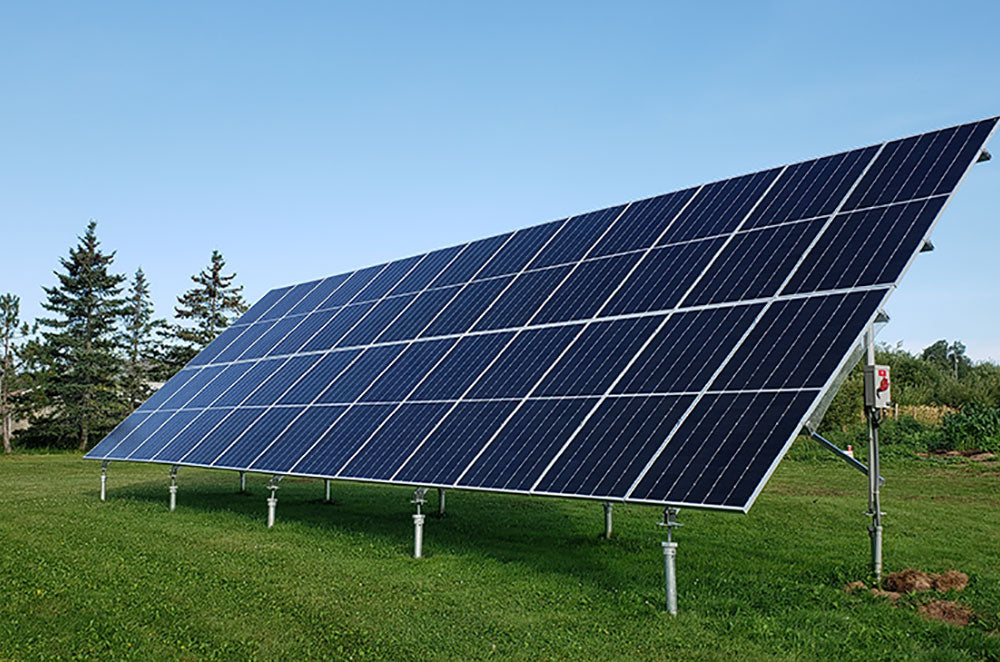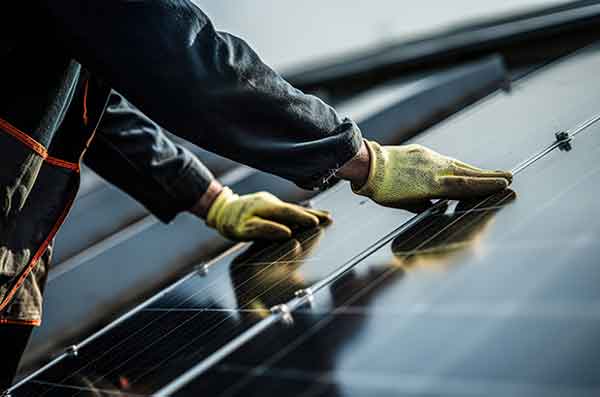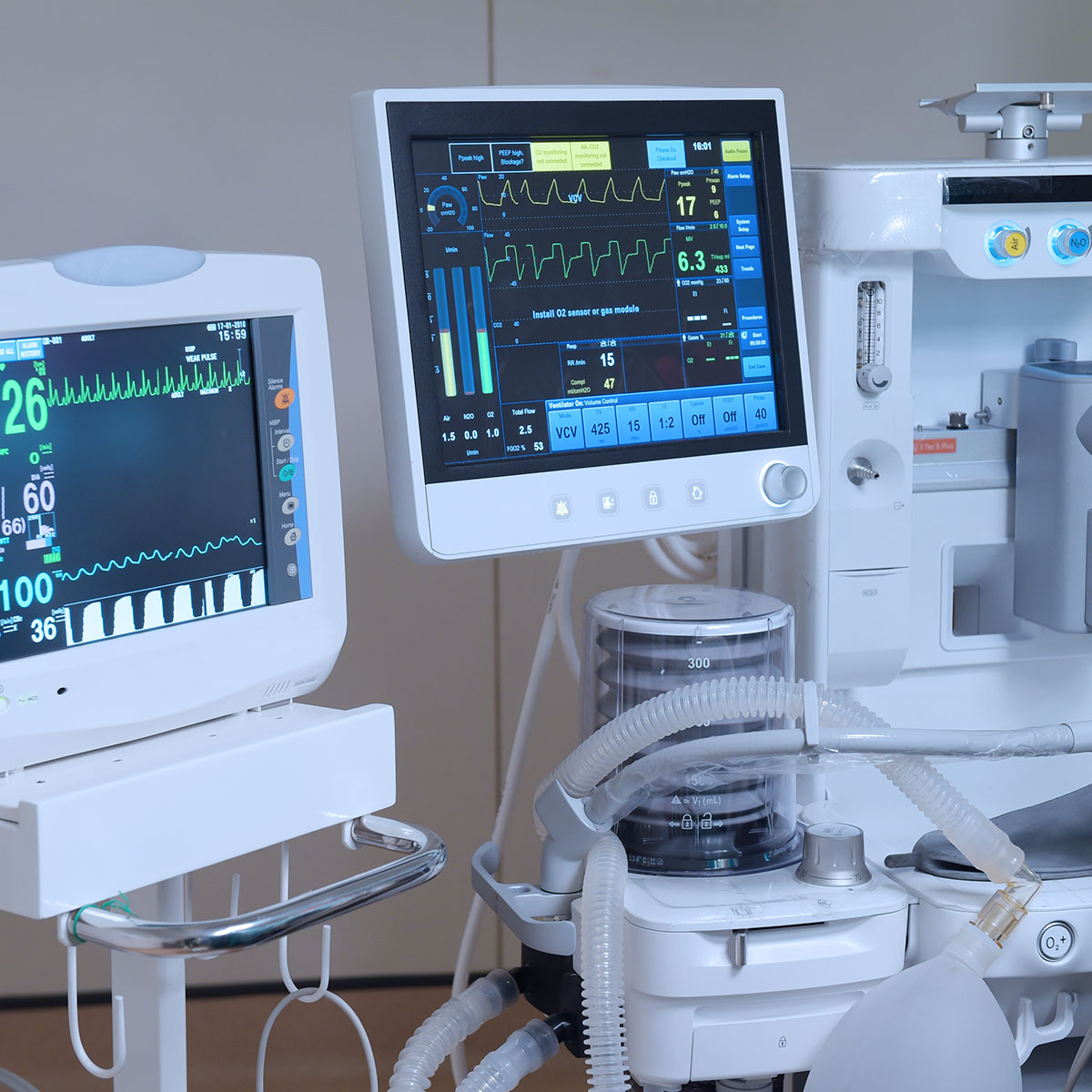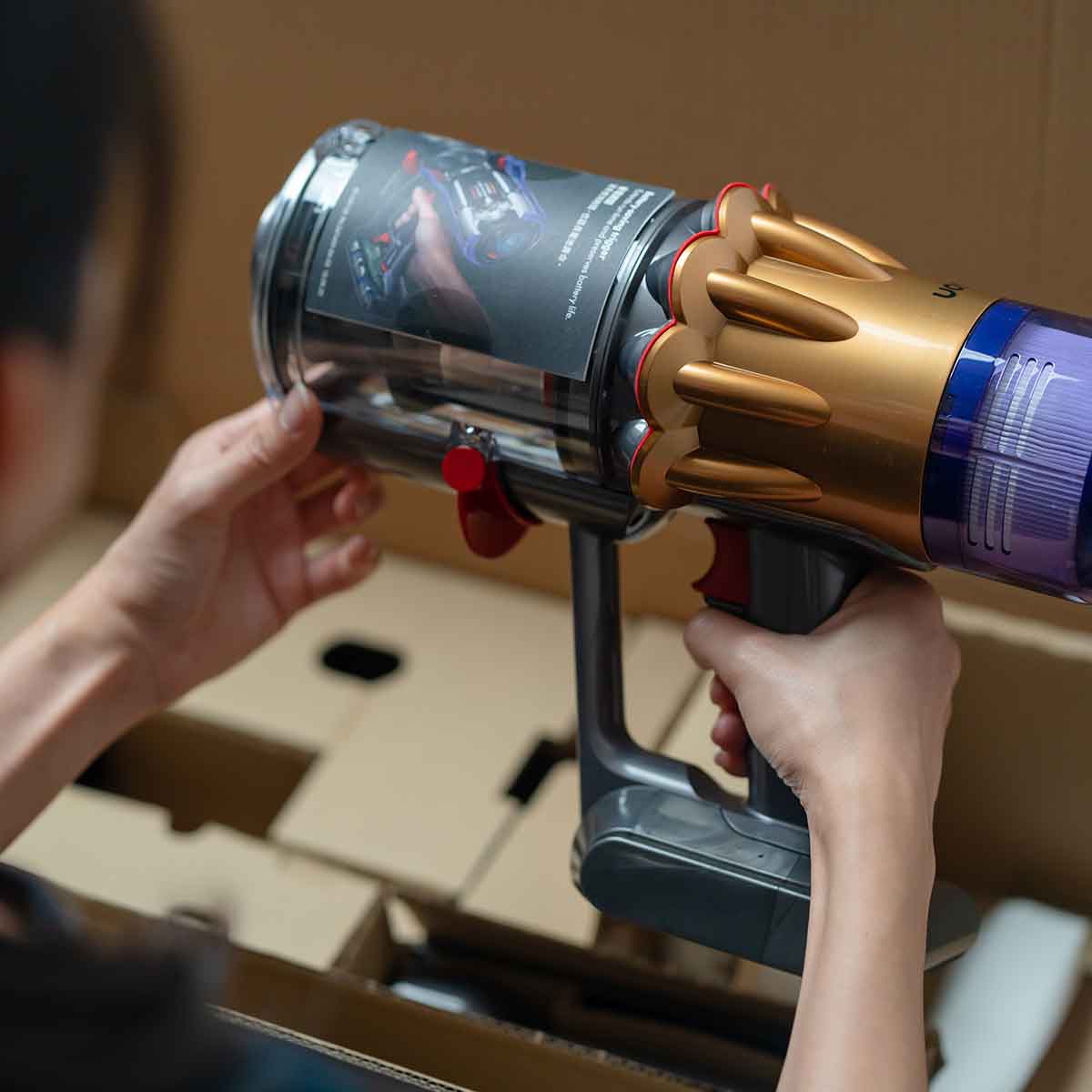Grid Tie & Off-Grid
|
UTILIZE ALTERNATIVE ENERGY SOURCES FOR YOUR SITE At Clear Power Solutions we help customers connect to alternative energy sources, both on-grid and off-grid. You can learn more about both of these options below in greater detail. When you’re ready to get started, or if you have further questions, contact us today. |

Michael Simon began exploring the idea of solar panels in the summer of 2019 and one year later roughly 55 solar panels are on his roof. |
Grid-Tie (Net Meter) Solar with Battery Backup
Grid-tie solar systems simply tie into the electrical grid through an AC distribution panel. These systems do not require batteries for storing power, but some systems do have batteries only for back-up power. The main components of a system are solar panels, DC-AC grid-tie inverter and DC/AC disconnect, depending on what the local electrical code requires.
Solar grid-tie with battery backup is becoming more and more popular. With intense weather systems targeting Atlantic Canada, homeowners are looking to become more independent during power outages and utilities are battling the weather conditions to keep the lights on. A battery backup system is designed to run critical loads like water pumps, fridges, freezers, lights, and other small loads during a power outage. During a power outage the system will automatically switch to battery power. A solar system with no battery storage has to shut down during a power outage for safety/code reasons to prevent back-feeding solar energy to the grid while linesmen repair the power lines. The solar panels and battery storage system is wired in a way that it creates a micro-grid and isolates the solar energy and battery storage from the main electrical panel. This is called “AC coupling.” During a power outage a separate backup electrical is energized from the system leaving the main electrical panel de-energized. When the power is restored, the system will automatically switch back to grid power and recharge the batteries for the next outage. When grid power is available, the batteries are maintained at a 100% charge so they are always ready for the next power outage. Learn more by reading the Magnum AC coupling document.
NB Power and Saint John Energy have a system called ‘net metering.’ If you are producing your own power with solar, the power commission will track what you produce and what you purchase from the utility by using a net meter. If you ever produce more power than what is needed in your home, the extra power will go into the electrical grid and you will receive a credit from the utility.
On-Grid System
Remote (Off-Grid) Solar Systems
Remote solar systems work by providing AC and DC power where the electrical grid is not available. Solar panels charge batteries, and those batteries in turn store DC power and provide power for DC and AC loads. If 120VAC/240VAC is required, a DC-AC inverter is required, which takes DC power and converts it to usable AC power. To learn more about the components of this system, choose from the menu below.
Off-Grid System
Solar Panels
Solar panels convert energy from the sun to DC power for charging batteries. Solar panels come in a wide range of sizes, voltages and wattage. Solar panels need to be located in direct sunlight with no shading facing due south and mounted at an ideal angle of 45 degrees. There are many different mounting options, including roof mounts (flush or tilted), pole mounts and ground mounts.
Charge Controllers
A charge controller is a device that is used to regulate the charging of batteries. There are two different types of charge controllers: maximum power point tracking (MPPT) and conventional charge controllers. In ideal conditions you will gain up to 30% off your solar array by using an MPPT charge controller. This is possible because MPPT controllers continually calculate the solar panel maximum power voltage.
The MPPT controller operates the solar panel at its maximum power voltage to extract the maximum power. The higher power extracted from the solar panel is provided to the battery in the form of increased charge current. Conventional controllers cannot increase the power because they connect the solar panel directly to the battery when the battery is discharged and don’t calculate the solar panel maximum power voltage.
Batteries
Batteries in remote solar systems are used to store the energy from the sun. The energy in batteries is measured in amp hours, which refers to how many amps can be used from the battery over a period of time. There are three battery types used in remote solar systems: deep cycle flooded, gel, and absorbed glass mat (AGM). The most common battery used in a remote system is deep cycle flooded because of cost and durability.
Inverters
Inverters also come in different models for different system needs. Some inverters are very simple, DC terminals on one end and AC plugs on the other end for plugging in something simple like a toaster. Common inverters for larger remote systems are hard wired. These inverters are designed to be wired into AC distribution panels and also have built-in battery chargers that require power from a generator. A generator can be used for providing power for the battery charger when there is not enough sun and for running large loads like power tools that will drain the batteries fast.
LED Lighting
LED lighting has several benefits when compared to conventional lighting. In particular, this type of bulb has low power consumption and a high life expectancy. These bulbs also run on DC power (i.e. 12V DC, 24V DC).
System Sizing
To size a system, a few questions need to be considered: Will solar work best for the system? How often will the system be used? How many watts will be used daily? When Clear Power Solutions Inc designs a system, the first thing we do is determine the capacity of the battery or batteries. We design the battery/batteries to be discharged 50%, which extends the life of the battery. Depending on the customer’s needs, we will size the battery to provide power for 3 days with no sun. When sizing the solar, Clear Power Solutions Inc designs the solar around the customer’s needs. Some customers will require recharging faster than others. For example, one customer might only use the system on the weekends, which gives the batteries all week to recharge. One thing to remember is that no two systems are the same, and that every system is designed around the customer’s needs.






